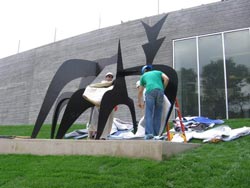Rumi
When Mark di Suvero’s monumental, painted steel sculpture, Rumi (1991), was deinstalled in 2000 due to construction of the Museum’s underground parking garage, it was discovered that the bottom of the base plate and the area behind the attachment bolts of the sculptural components were rusted.
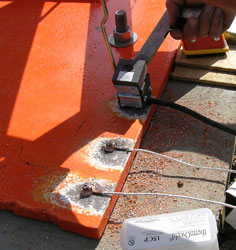
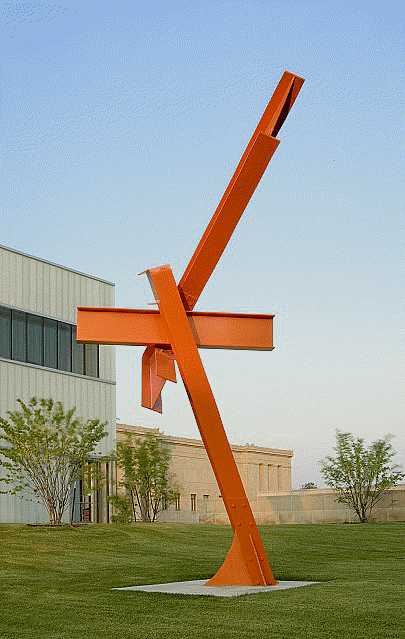
In preparation for repainting the sculpture, the heavy layer of corrosion on the base plate was removed by sandblasting, while the lighter corrosion around the attachment holes was removed with a chemical peel. These bare areas were painted with a special zinc-based primer, the entire sculpture was covered with an epoxy-based paint and a polyurethane topcoat layer of orange paint was applied.
In order to eliminate the possibility of future rusting, a cathodic protection system was added to the base plate during its reinstallation. The system consists of 320 pounds of finely ground manganese metal in bags buried in the ground around the sculpture and connected to it with three electrical wires.
Natural moisture in the soil causes an electrical current to flow between the bagged manganese and the steel of the sculpture. As long as the electrical current flows between the two metals, the manganese will corrode, leaving the sculpture protected. When all of the existing manganese is used up (approximately 18 years), it will be replaced with new manganese, and the protective system will be renewed for another 18 years.
A grant from the Institute of Museum and Library Services helped fund the conservation of Rumi.
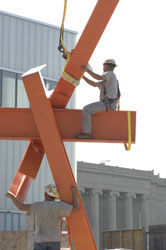
Mark di Suvero, American, born 1933, Rumi, 1991, Steel, paint. Gift of the Hall Family Foundation. F99-33/5
Shuttlecocks
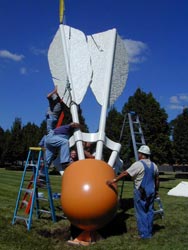
One of the most popular works at The Nelson-Atkins Museum of Art, Shuttlecocks (1994) by Claes Oldenburg and Coojse van Bruggen, was recently restored to top-flight condition.
An agreement with the artists stipulates that the white-feathered badminton birdies be treated and repainted every two years. However, concerns that paint build-up eventually would obscure the sculptures’ realistic texture prompted a search for a more effective solution.
In 2002, Museum conservators chose a painting system with a life expectancy of 15 years for Shuttlecocks. The system consists of three layers—an epoxy primer, a polyurethane intermediate layer and a topcoat of thermoset solution fluoropolymer.
In preparation for painting, each of the four Shuttlecocks was disassembled utilizing a variety of lifting devices, including cranes and a giant forklift. These individual pieces then were loaded onto flatbed trucks for transport to the painting contractor.
At the paint shop, the feathers and balls were cleaned, and cracks were sealed before the new paint was applied. The process of researching, treating and repainting all four Shuttlecocks took place over a four-year period.
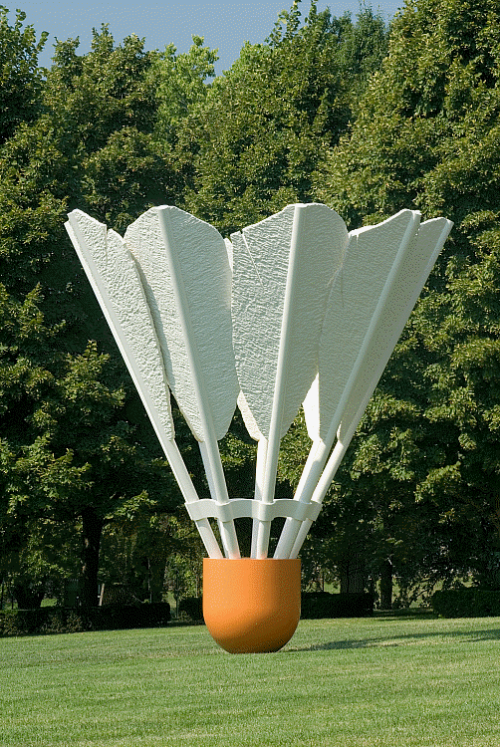
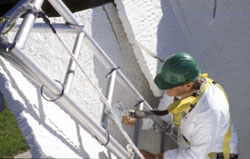
Today, three of the Shuttlecocks stand reassembled and reinstalled in their original locations. The location of the fourth Shuttlecock shifted by a few feet in order to accommodate the Museum’s new parking garage.
A grant from the Institute of Museum and Library Services helped fund the conservation of Shuttlecocks.
Claes Oldenburg, American, born Sweden 1929, Coosje van Bruggen. American, born The Netherlands, 1942. Shuttlecocks, 1994. Aluminum, fiberglass-reinforced plastic, paint. Purchase: acquired through the generosity of the Sosland Family. F94-1/3
Tom's Cubicle
Alexander Calder’s sculpture Tom’s Cubicle (1967) is a stationary, abstract construction fabricated of black painted steel. It recently underwent conservation treatment because its painted surface had suffered significant ultraviolet light degradation and had developed a dull, faded, chalky appearance.
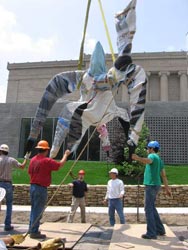
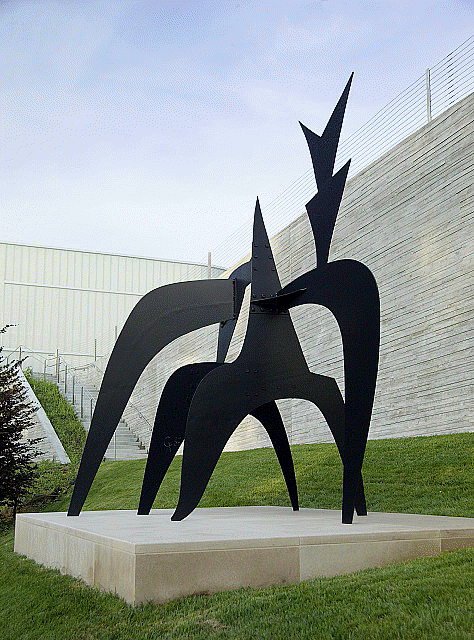
Tom’s Cubicle was removed from the East Sculpture Terrace of the Museum’s Kansas City Sculpture Park using a large tower crane. After transport to the painting facility, the sculpture was disassembled by removing the 40 large nuts and bolts which joined the 10 sections together. Using guidelines established by the Calder Foundation, Museum conservators worked with a local painting contractor to remove the degraded black polyurethane paint and primer from the sculpture’s surface.
After the sculpture was reassembled, it was painted with a spray application of zinc primer and a topcoat of matte black, acrylic urethane paint. This paint has been tested for its ability to withstand outdoor exposure, and the results indicate that Tom’s Cubicle should withstand a minimum of 20 years of outdoor exposure. The sculpture should not need to be repainted again until 2026.
The 700-pound sculpture was then returned by a large truck to the Museum’s Sculpture Park. Using a small crane, a crew of seven carefully installed Tom’s Cubicle in its new location on the east side of the Bloch Building.
A grant by the Institute of Museum and Library Services helped fund the conservation of Tom’s Cubicle.
